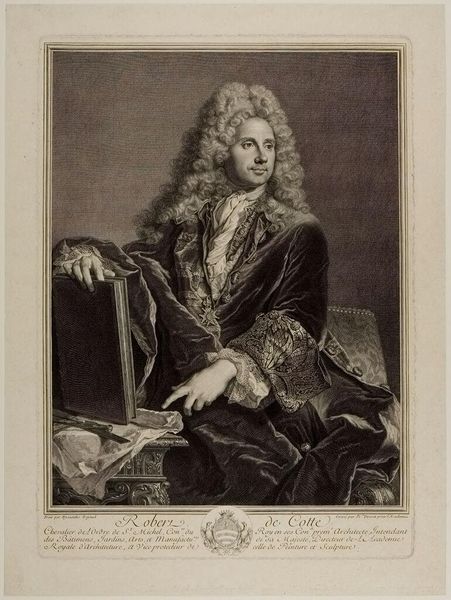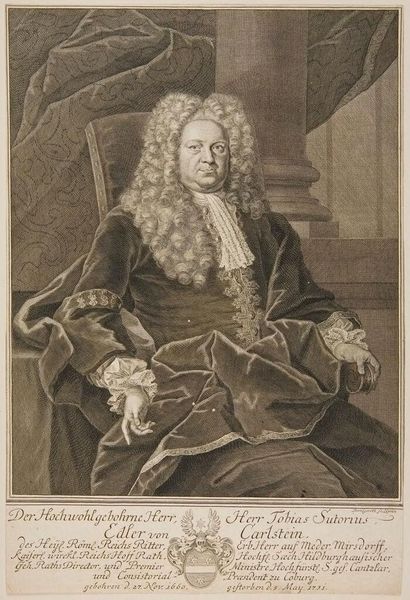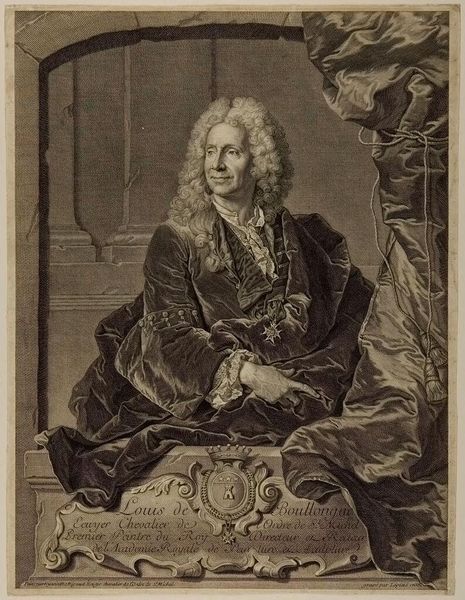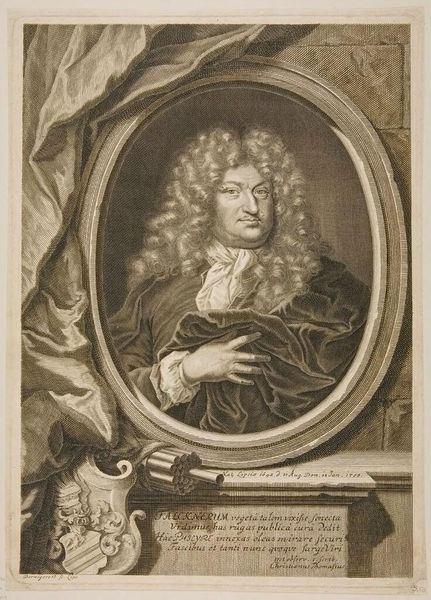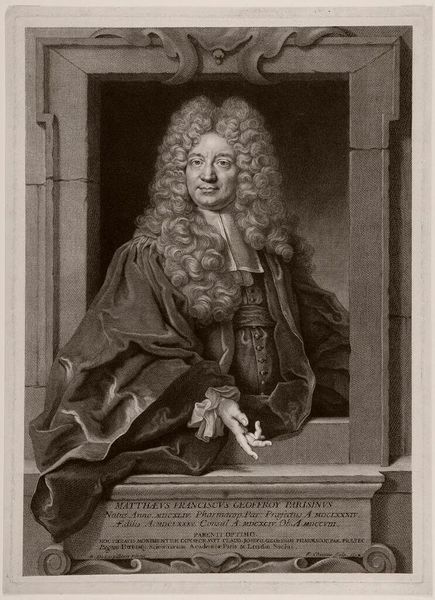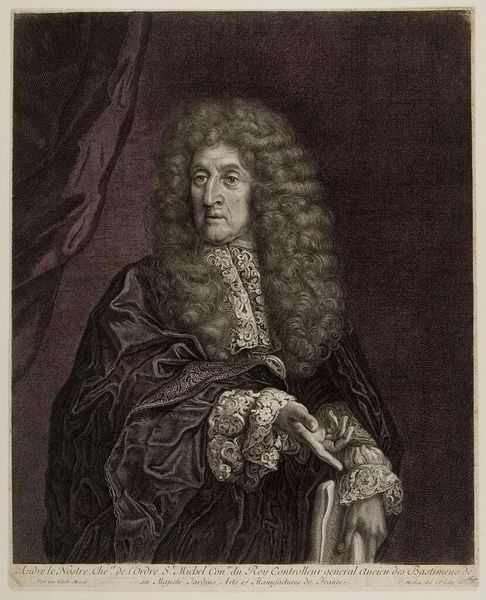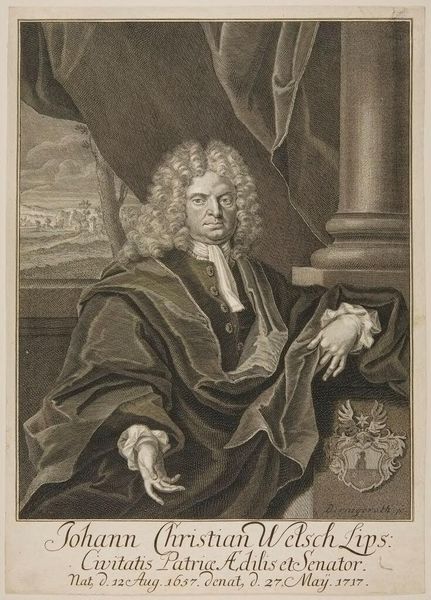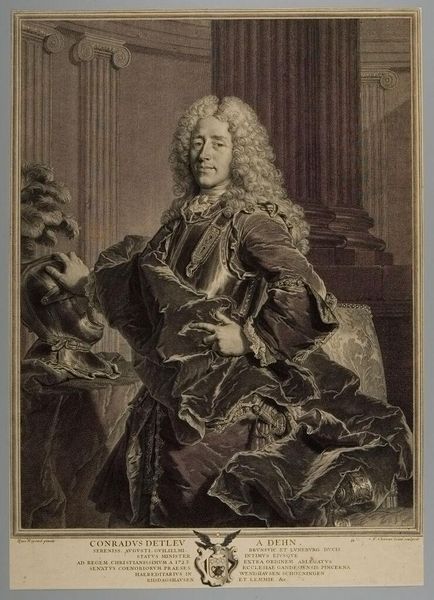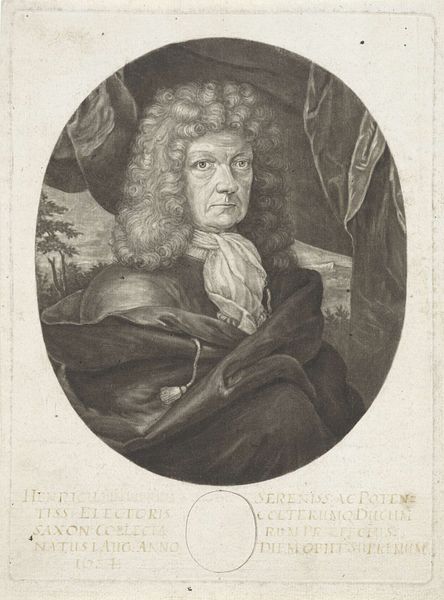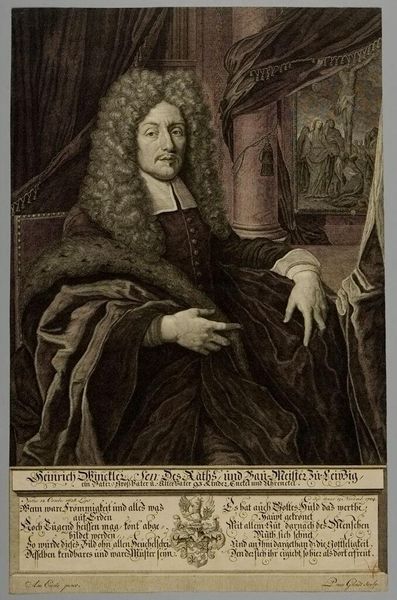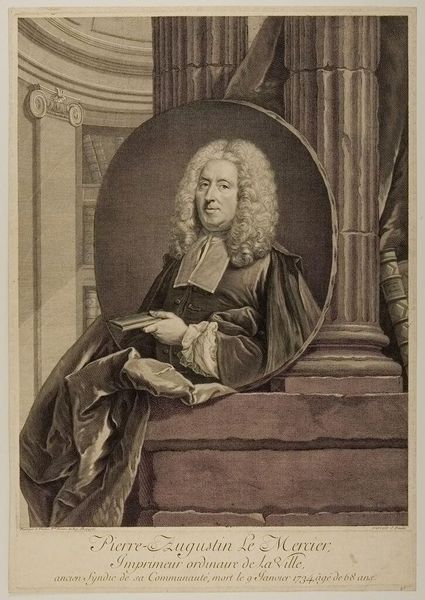
Johann Georg von Schmidt c. 18th century
Copyright: CC0 1.0
Editor: We're looking at Bernhard Vogel's portrait of Johann Georg von Schmidt. It's quite imposing, with that grand wig and all the baroque details. What do you see in this piece that speaks to its historical context? Curator: It's fascinating how Vogel uses portraiture to define social standing. This isn't just about depicting an individual; it's about showcasing Schmidt's place within the power structures of Nuremberg. Editor: So, it's a statement about status, not just a likeness? Curator: Precisely. Think about who commissions such portraits, where they were displayed, and the messages they conveyed about wealth, influence, and civic identity. It’s about reinforcing a social order. Editor: I see. So, it's like a visual declaration of power. That’s a very different way to look at a portrait.
Comments
No comments
Be the first to comment and join the conversation on the ultimate creative platform.
